Karakter Organisme Biologis dalam Bioremediasi - Review
 Abstract views: 190
,
Abstract views: 190
,
 PDF downloads: 4090
PDF downloads: 4090
Abstract
Heavy metals and organic pollutants are considered to be important environmental issues for human sanity. The pollution of soils and water trunk by organic pollutants and toxic metals has enhanced in current years due to industrialization, anthropogenic zeal, and intensive farming. The haphazard and indiscriminate removal of industrial waste and municipal waste to the aquatic environment has become the main global interest. One method to reckon with this pollution is the utilize of biological organisms. The technology or process of using biological organisms to destroy or reduce hazardous waste in an infected site is called bioremediation. Bioremediation is the best waste treatment method for controlling environmental pollution and restoring contaminated soil. The use of biological materials, combined with other advanced processes is one of the most hopeful and cheap oncomings to eliminate environmental pollutants. The bioremediation technique is a useful choice to degrade pollutants. This article gives the significant biological organisms apply in the bioremediation technique.
References
Al-Mailem,D.M.etal.(2010)‘Oil-bioremediationpotentialofArabianGulfmudflatsrichindiazotrophichydrocarbon-utilizingbacteria’,InternationalBiodeterioration&Biodegradation,64(3),pp.218–225.doi:10.1016/j.ibiod.2010.01.007.Al-Mailem,D.M.,Eliyas,M.andRadwan,S.S.(2013)‘Oil-bioremediationpotentialoftwohydrocarbonoclastic,diazotrophicMarinobacterstrainsfromhypersalineareasalongtheArabianGulfcoasts’,Extremophiles,17(3),pp.463–470.doi:10.1007/s00792-013-0530-z.Anas,I.andSetiadi,Y.(2012)‘ProduksiGasKarbonDioksidaSelamaProsesBioremediasiLimbahHeavyOilDenganTeknikLandfarming’,ChemistryProgress,3(1),pp.1–5.doi:10.35799/cp.3.1.2010.66.Atlas,R.M.andHazen,T.C.(2011)‘OilBiodegradationandBioremediation:ATaleoftheTwoWorstSpillsinU.S.History’,EnvironmentalScience&Technology,45(16),pp.6709–6715.doi:10.1021/es2013227.Baihaqi,B.etal.(2018)‘BIOREMEDIASILIMBAHCAIRKELAPASAWITDENGANMENGGUNAKANSpirogyrasp’,BIOTIK:JurnalIlmiahBiologiTeknologidanKependidikan,5(2),p.125.doi:10.22373/biotik.v5i2.3021.Beškoski,V.P.etal.(2011)‘Exsitubioremediationofasoilcontaminatedbymazut(heavyresidualfueloil)–Afieldexperiment’,Chemosphere,83(1),pp.34–40.doi:10.1016/j.chemosphere.2011.01.020.Bezza,F.A.andChirwa,E.M.N.(2015)‘ProductionandapplicationsoflipopeptidebiosurfactantforbioremediationandoilrecoverybyBacillussubtilisCN2’,BiochemicalEngineeringJournal,101(October),pp.168–178.doi:10.1016/j.bej.2015.05.007.Chanif,I.,Hambali,E.andYani,M.(2017)‘KinerjaOilSpillDispersantDalamProsesBioremediasiTanahTercemarMinyakBumi(StudiKasusTanahTercemarMinyakBumiLapanganXYZ)’,JurnalTeknologiIndustriPertanian,27(3),pp.336–344.doi:10.24961/j.tek.ind.pert.2017.27.3.336.Chorom,M.,Sharifi,H.S.andMotamedi,H.(2010)‘Bioremediationofacrudeoil-pollutedsoilbyapplicationoffertilizers’,IranianJournalofEnvironmentalHealthScienceandEngineering,7(4),pp.319–326.Hassanshahian,M.etal.(2014)‘Bioremediation(bioaugmentation/biostimulation)trialsofoilpollutedseawater:Amesocosmsimulationstudy’,MarineEnvironmentalResearch,95,pp.28–38.doi:10.1016/j.marenvres.2013.12.010.Jain,P.K.etal.(2011)‘BioremediationofPetroleumoilContaminatedSoilandWater’,ResearchJournalofEnvironmentalToxicology,5(1),pp.1–26.doi:10.3923/rjet.2011.1.26.Juliani,A.andRahman,F.(2011)‘BioremediasiLumpurMinyak(OilSludge)denganPenambahanKompossebagaiBulkingAgentdanSumberNutrienTambahan’,JurnalSains&TeknologiLingkungan,3(1),pp.01–18.doi:10.20885/jstl.vol3.iss1.art1.Karlapudi,A.P.etal.(2018)‘Roleofbiosurfactantsinbioremediationofoilpollution-areview’,Petroleum,4(3),pp.241–249.doi:10.1016/j.petlm.2018.03.007.Lestari,W.etal.(2018)‘POTENSIJAMURINDIGENUSRIAU(Penicilliumsp.PN6)DANNeptuniaoleraceaUNTUKBIOREMEDIASIOILSLUDGE’,Al-Kauniyah:JurnalBiologi,11(1),pp.72–81.doi:10.15408/kauniyah.v11i1.6350.Lin,T.-C.,Pan,P.-T.andCheng,S.-S.(2010)‘Exsitubioremediationofoil-contaminatedsoil’,JournalofHazardousMaterials,176(1–3),pp.27–34.doi:10.1016/j.jhazmat.2009.10.080.Martin,J.W.etal.(2010)‘OzonationofOilSandsProcess-AffectedWaterAcceleratesMicrobialBioremediation’,EnvironmentalScience&Technology,44(21),pp.8350–8356.doi:10.1021/es101556z.Munawar,M.andZaidan,Z.(2013)‘BioremediasiLimbahMinyakBumidenganTeknikBiopilediLapanganKlamonoPapua’,JurnalSains&Matematika,pp.41–46.Quintella,C.M.,Mata,A.M.T.andLima,L.C.P.(2019)‘Overviewofbioremediationwithtechnologyassessmentandemphasisonfungalbioremediationofoilcontaminatedsoils’,JournalofEnvironmentalManagement,241(April),pp.156–166.doi:10.1016/j.jenvman.2019.04.019.Radwan,S.etal.(2010)‘IdentitiesofEpilithicHydrocarbon-UtilizingDiazotrophicBacteriafromtheArabianGulfCoasts,andTheirPotentialforOilBioremediationWithoutNitrogenSupplementation’,MicrobialEcology,60(2),pp.354–363.doi:10.1007/s00248-010-9702-x.Retno,T.andMulyana,N.(2013)‘BioremediasiLahanTercemarLimbahLumpurMinyakMenggunakanCampuranBulkingAgentsyangDiperkayaKonsorsiaMikrobaBerbasisKomposIradiasiBioremediationofOilSludgeContaminatedSoilUsingBulkingAgentMixtureEnrichedConsortiaofMicrobialInocu’,JurnalIlmiahAplikasiIsotopdanRadiasi,9(2),pp.139–150.doi:10.17146/jair.2013.9.2.2738.Ron,E.Z.andRosenberg,E.(2014)‘Enhancedbioremediationofoilspillsinthesea’,CurrentOpinioninBiotechnology,27,pp.191–194.doi:10.1016/j.copbio.2014.02.004.Roy,A.etal.(2018)‘Biostimulationandbioaugmentationofnativemicrobialcommunityacceleratedbioremediationofoilrefinerysludge’,BioresourceTechnology,253,pp.22–32.doi:10.1016/j.biortech.2018.01.004.Roy,A.S.etal.(2014)‘Bioremediationpotentialofnativehydrocarbondegradingbacterialstrainsincrudeoilcontaminatedsoilundermicrocosmstudy’,InternationalBiodeterioration&Biodegradation,94,pp.79–89.doi:10.1016/j.ibiod.2014.03.024.Scoma,A.,Yakimov,M.M.andBoon,N.(2016)‘ChallengingOilBioremediationatDeep-SeaHydrostaticPressure’,FrontiersinMicrobiology,7(AUG).doi:10.3389/fmicb.2016.01203.Xu,Y.andLu,M.(2010)‘Bioremediationofcrudeoil-contaminatedsoil:Comparisonofdifferentbiostimulationandbioaugmentationtreatments’,JournalofHazardousMaterials,183(1–3),pp.395–401.doi:10.1016/j.jhazmat.2010.07.038.
Copyright (c) 2020 Evitasari, Geo Aghni Bintang Sukono, Farhan Rahmatullah Hikmawan, Dodi Satriawan

This work is licensed under a Creative Commons Attribution 4.0 International License.
















